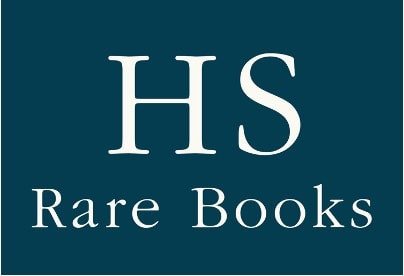![Gaubil, Antoine, Catalogue Chinois des Étoiles, Autograph manuscript, [Beijing, 1734].](https://artlogic-res.cloudinary.com/w_1600,h_1600,c_limit,f_auto,fl_lossy,q_auto/artlogicstorage/hsrarebooks/images/view/22c83b6098977c0ca3631a03972d0e31j/hsrarebooks-gaubil-antoine-catalogue-chinois-des-e-toiles-autograph-manuscript-beijing-1734-..jpg)
Gaubil, Antoine
An unrecorded manuscript celestial atlas from the Sui dynasty, edited with an extensive commentary by the early 18th century Jesuit astronomer Antoine Gaubil, hailed by Joseph Needham as the “the interpreter general and father superior of Chinese astronomy”, of which this manuscript gives impressive evidence. The manuscript contains an unpublished translation of the “Bu Tian Ge” (a.k.a. “Songs of pacing the heavens” or “The song of the marches of the heavens”), a Sui dynasty (581-618 CE) star catalogue in verse by the Taoist hermit Dan Yuanzi, also known as Wang Ximing. Beyond the text of the star catalogue, Gaubil provides his ink- drawn copies of 31-star charts, including a fold-out celestial map of the north polar region. Gaubil provides an extensive commentary on the text, and a tabular catalogue of Chinese stars that allows us to determine the corresponding European stars based on their distance from the North Pole.
Folio (250 x 328 mm). French manuscript on oriental paper. 78 (bound in reverse order), 3 pp. With 31 maps of stars and constellations, including 1 large fold-out diagram (ca. 540 x 435 mm). Modern quarter morocco, title in gilt on spine. Well preserved, the fold-out shows minor browning and creases.
Written in verse, the “Bu Tian Ge” was probably not intended for a scientific audience but to disseminate astronomical knowledge and to serve as a mnemonic. It is “important in the history of Chinese astronomy because it definitely codifies the subdivision in the celestial skies into 3 yuan (enclosures or barriers) and 28 essential xiu, thus delineating the original theoretical organization of ancient Chinese astronomy” (Iannaccone). The poem is a testament to the microcosm- macrocosm analogy in Chinese natural philosophy, walking the reader through palaces and other institutions of the Chinese Empire, linking stars and their constellations to the political organization of the state and its representatives. In this system, the first constellation is the middle or purple palace (Zi wei yuán) of the Celestial Emperor. The constellations of the purple palace or Ziwei enclosure are represented in fig. 1, the spectacular fold-out celestial map of the north polar region. Although the illustrations and the text are from the same source, Gaubil remarks in a short introduction to the charts that they cannot be assumed to be identical with those of the Sui dynasty original.
In his notes and comments, Gaubil provides erudite cultural contextualization and the key to connecting Chinese astronomy with its European equivalent. He points out to astrological beliefs tied to the specific form of celestial representation in the “Bu Tian Ge”, while distancing Chinese astronomical scholars from astrology. Gaubil offers a history of Chinese star catalogues and charts, tracing them back to the legendary Shang dynasty (ca. 1600-1046 BCE) shaman Wuxian, here transcribed as "Vou Hien". Gaubil mentions the star charts of Ferdinand Verbiest and Claudio Grimaldi, and of the catalogue of Jesuit François Noël, he says: “wrote a Latin catalogue of Chinese stars, but I do not think it is enough to explain what the Chinese know about stars”.
Gaubil (1689-1759), Jesuit missionary, astronomer, and historian at the Imperial Court in Beijing, arrived in Beijing in 1722 and remained there for the rest of his life, he was the most important astronomer among the French Jesuits in China, and one of the greatest disseminators of Chinese science in Europe in the 18th century. His work on astronomy and as an historian and translator of important Chinese texts such as the “I Ching” earned him the praise of Alexander von Humboldt as the wisest of the Jesuit missionaries.
Isaia Iannaccone, A Jesuit Scientist and Ancient Chinese Heavenly Songs, in: Historical Perspectives On East Asian Science, (Singapore University Press, 2002), pp. 299-316. Joseph Needham, Science and Civilisation in China, vol. 3: Mathematics and the Sciences of the Heavens and the Earth (Cambridge 1959).
Provenance: The library of Sir Thomas Phillipps (1792-1872); Sotheby’s, London, 2023.
Join our mailing list
* denotes required fields
We will process the personal data you have supplied in accordance with our privacy policy (available on request). You can unsubscribe or change your preferences at any time by clicking the link in our emails.
